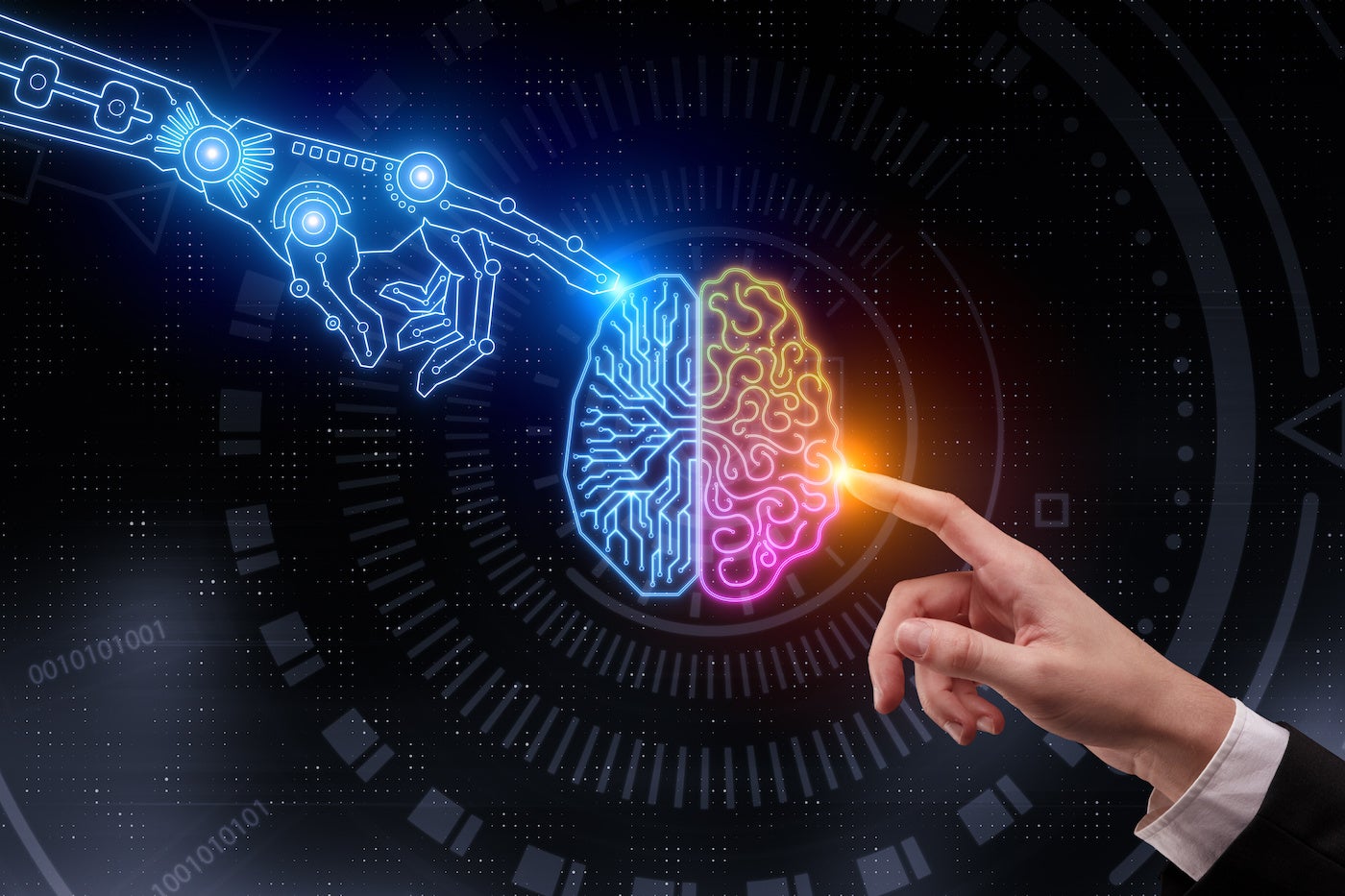
The 2023 Gartner IT Symposium/Xpo kicked off on October 16, with a hard focus on generative AI and how businesses can leverage the technology. TechRepublic attended a virtual event on Monday that was exclusive for the press, where Gartner Opening Keynote speakers and Distinguished VP Analysts Mary Mesaglio, Don Scheibenreif and Erick Brethenoux addressed the human-machine relationship and how business can stay in front of the new AI era.
Jump to:
- How the relationship between humans and machines is changing
- How to identify business opportunities for everyday and game-changing AI
- AI beyond the “tyranny of the quarter”
- How to build a healthy human-machine relationship
- Who is responsible for ensuring healthy human-machine relationships?
How the relationship between humans and machines is changing
Gartner analysts said the changing relationship between humans and machines is driven by new generative AI innovations. When discussing this topic, Gartner analysts use the term machines broadly from a historical perspective; when talking about new changes in the human-machine relationship, the term machines refers to automated systems and new AI technologies.
The 2024 Gartner CIO and Technology Executive Survey revealed that 73% of CIOs say their enterprise will increase funding for artificial intelligence/machine learning in 2024. And, 80% of CIOs reported that their organizations are planning full adoption of generative AI within three years.
“We see generative AI as being the starting gun for that profound shift,” Scheibenreif said at the virtual press briefing. Scheibenreif explained that as machines become more conversational and human-like, the way humans interact with them is moving historically in a new direction.
From tools to teammates
Scheibenreif highlighted the shift in human perceptions about machines. In the past, machines were considered tools, but now leading companies and businesses are engaging with them as teammates, Scheibenreif said. Gartner predicts that, by 2025, generative AI will be a workforce partner for 90% of companies globally.
“We have had a tangled history (with machines) for literally thousands of years,” Scheibenreif said. However, according to Scheibenreif, this relationship changed with the introduction of the world wide web, smartphones and recently the introduction of ChatGPT and other generative AI chatbots.
“Machines have gone from being our tools to being our teammates,” Scheibenreif said. “We’ve seen examples all over the world of how machines are taking on different roles. This reinforces the idea that this is more than just a technology or a business trend. It really is a shift in how we interact with machines.”
When machines become customers
Businesses are also rethinking and transforming the human-machine relationship by creating systems, technology and machines that act as customers. According to Scheibenreif, this trend is expected to accelerate.
For example, Tesla vehicles are able to self-diagnose and order parts if needed. Similarly, industrial robots and Industrial Internet of Things monitor performance and can alert or schedule maintenance operations automatically, while numerous smart homes IoT devices can order groceries, cleaning supplies and other household items based on the needs of the residents.
Referring to HP’s Instant Ink printer, which applies the same machine-as-a-customer premise and can order ink automatically when levels are low, Scheibenreif said, “HP, in effect, has actually manufactured its own customers.”
“What happens when your best customers aren’t human? How does that change your sales strategy and your marketing approach or HR approach?” Scheibenreif asked.
How to identify business opportunities for everyday and game-changing AI
During the Gartner AI press briefing, Mesaglio spoke about how businesses can identify AI opportunities in different areas.
“On the one side, you have everyday AI — what makes you faster, more efficient, better,” Mesaglio said. “Then you have game-changing AI, as your creativity partner, creating whole new AI-enabled products and services and maybe industries.”
Both everyday AI and game-changing AI have internal and external opportunities. “What that does is create four opportunities for businesses to consider,” Mesaglio said. The four opportunities are external everyday AI, internal everyday AI, internal game-changing AI and external game-changing AI.
Internal everyday AI works in the back office and backend systems and drives decision-making, productivity, risk management, development and numerous other areas. In contrast, external everyday AI is deployed by businesses on their customer-facing systems. These forward-looking AI solutions are used by companies to add value to their portfolio, differentiate themselves in a competitive market and stay on top of trends.
“Then you have game-changing AI,” Mesaglio said. She explained that internal game-changing AI is applied to business core capabilities, developing new ways to create new results; external game-changing AI is destined for customers.
An example of external game-changing AI may be its use to develop and produce products that use science, technology and innovation to achieve a specific function or purpose. These products can include solutions that use AI or machine learning, big data and other advanced technologies.
By looking into these four areas of opportunities, Mesaglio said businesses can cut through the AI hype and analyze where they want to invest and where they don’t.
AI beyond the “tyranny of the quarter”
Since the first public generative AI models were rolled out globally by big tech, the same companies — OpenAI, Microsoft, IBM, AWS, Google and other top cloud vendors and AI startups — began releasing enterprise generative AI models.
Many industries and businesses from various sectors are rushing to deploy these enterprise AI solutions to reap the promised benefits; however, Brethenoux called for companies to move with caution and not push boundaries.
“One of the biggest mistakes that our clients have made with generative AI in the last nine months has been to look exclusively at productivity gains,” Brethenoux said. “So they look at ways to eliminate many positions in their organization because it looks good at the end of the quarter.”
Brethenoux explained that replacing workers with AI, in the long run, is a bad idea. Companies will need human workers as they introduce new products, services or grow.
“So there’s a danger here that we’ve seen happening in these organizations, where they are only focusing on those productivity gains,” Brethenoux added. “We see this today — many people are focusing on the tyranny of the quarter.”
“We see that, too,” Mesaglio, who works in a different Gartner department leading the Executive Leadership Dynamics team, said. (Brethenoux leads Gartner’s Artificial Intelligence steering council, and Don Scheibenreif works at Gartner’s Customer Experience research group.) “There’s this risk that you see it only through a technology lens, or you see it only through a short-term ROI lens, and you miss the larger conversation.”
Gartner experts agreed the key for companies is to think, debate, evaluate and explore the different types of relationships they want to have with machines and which business areas they want to wander in and which they want to avoid. In this way, AI projects should be more intentional and consider risks and consequences, especially those linked to security, privacy and compliance.
Gartner assured that by 2026, organizations that operationalize AI transparency, trust and security will see their AI models achieve a 50% improvement in terms of adoption, business goals and user acceptance.
How to build a healthy human-machine relationship
During this virtual event, TechRepublic asked Gartner experts how business leaders can build a healthy human-machine relationship and navigate the risks involved with deploying experimental technology.
“I think the fundamental number one mechanism that you should use anytime you’re exploring an area that is new and unexplored, different and unclear, is using principles,” Mesaglio replied.
Mesaglio warned businesses to rethink their principles, as many organizations have them but they are not effective. She added that principles need to be specific, unambiguous and aligned with business values, objectives and priorities.
“If you are trying to be the most customer-centric organization on the planet, your principles should be about customer-centricity,” Mesaglio said. “If you’re trying to be the most inexpensive and operationally efficient, your principle should be about that.”
By aligning principles with business outcomes, a more rigorous way of business thinking is achieved, according to Mesaglio. This will also determine which lines a company is willing or not willing to cross and help leaders better evaluate risks and threats to mitigate them.
Mesaglio added that leaders should be having conversations and engaging in workshops or exercises to determine what the company is comfortable doing when it comes to AI and machines. In this line of thinking, security and privacy are fundamental.
Brethenoux highlighted the risks linked to unnecessarily pushing for AI and innovation deployment, saying the technology is challenging to manage and has the potential to make business operations more complicated.
“One of the principles is that digital is never an outcome,” Mesaglio said. “The outcome is something beyond.”
Who is responsible for ensuring healthy human-machine relationships?
Scheibenreif added that ultimately it is the responsibility of the CEO to make sure human-machine relationships in their companies are healthy. “It’s the leader of the business — — they set the tone, and they should help drive the values for the organization and the application of AI.”
On the other hand, the CIO is well-positioned to lead the organization in the application of everyday AI. All aspects that are related to integrating generative AI technology should be under the CIO’s purview, Scheibenreif said. Naturally, leaders of different departments also have defined roles and responsibilities; however, when it comes to game-changing AI areas, Scheibenreif said the CIO is just part of a bigger team that is ultimately led by the CEO.


